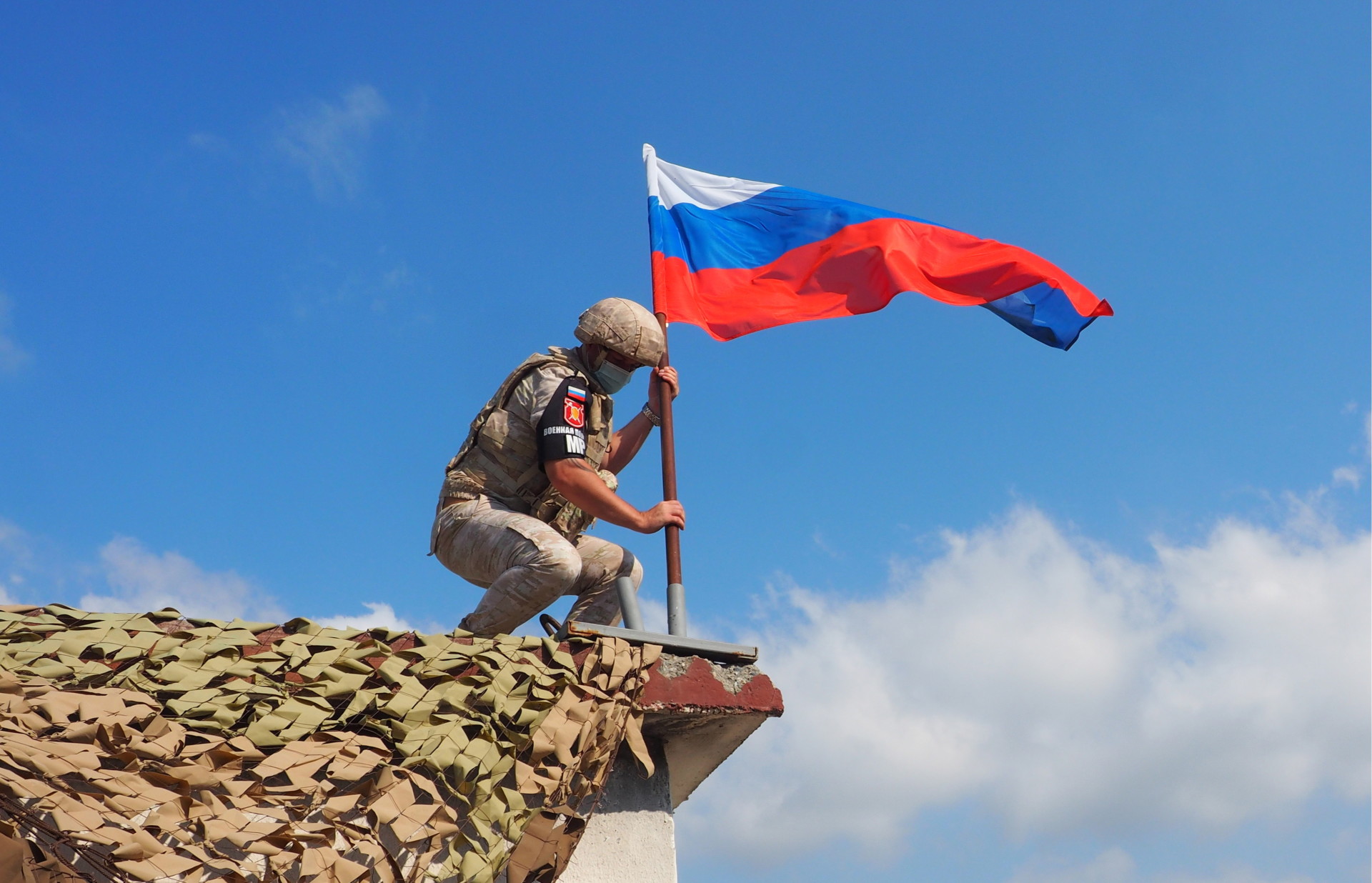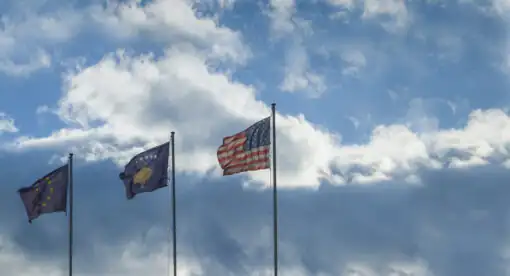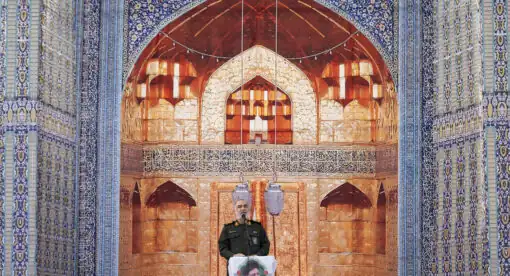Russia cannot compete with other global powers militarily, but it can serve as a chronic disruptor of their interests. Moscow’s strategy is not to dominate its opponents – mainly the United States – but to keep them off balance by applying diplomatic, economic, military, and political pressure.
Beginning in the late 1990s and accelerating drastically after 2014, Russia has gradually expanded its extraterritorial deployment of military forces. Russia now has some form of permanent or recurring military presence in Syria, South Ossetia, Abkhazia, Nagorno-Karabakh, Transnistria, Ukraine, Venezuela, the Central African Republic, Libya, Egypt, and Sudan.

Despite this expansion, Russia is nowhere close to being able to compete with China, the United States, or France in terms of overseas military operations. That is not to say Russia’s overseas military deployments are a paper tiger or a strategic overreach; rather, they are another example of Russia playing its weak hand exceptionally well, using limited resources to secure its strategic interest while serving as a disruptor to U.S. interests.
Russia’s strategy is not to dominate its opponents – mainly the U.S. – but to keep them perpetually off balance by applying diplomatic, economic, military, and political pressure. If the U.S. and its allies allow Russia to continue this strategy unhindered, they will find Russia inserting itself into a number of highly volatile conflict zones, expanding its interest to the detriment of U.S. goals. Russia has already used its strategy to check the expansion of NATO into the Caucasus and the broader former Soviet Union, prop up unfriendly regimes in Syria and Venezuela, and increasingly support governments skeptical of the U.S. in Africa.
Russia has also sought to use Washington’s own sanctions laws as a means to put pressure on current or potential U.S. alliances by actively pushing sales of weapon systems to force the U.S. into an uncomfortable position of sanctioning allies or issuing waivers. Russia’s goal is to provide an active hindrance to U.S. policy and further strain its already stressed alliances.
In 2014, then-President Barack Obama characterized Russia as a “regional power whose actions in Ukraine are an expression of weakness rather than strength.” That characterization, as is the case with so much related to Russia, is both true and false. While Russia’s economic and military capacity is much diminished since the days of the USSR, it is by no means weak, and President Vladimir Putin has shown an exceptional ability to make use of the resources available to him. By inserting itself into various conflicts, the Kremlin becomes a stakeholder in them and forces the U.S. and other nations to deal with Russia as a peer, preventing Russia from being globally isolated as the U.S. would wish.
This assessment will focus on the scalable approach of overseas military deployments that Russia utilizes as part of its broader strategy. This is a critical issue now because the Trump administration and U.S. domestic political troubles left the U.S. greatly diminished in its international standing, leaving exactly the opening that Russia will seek to exploit. The U.S. needs to improve its understanding of Russia’s strategy and move against it accordingly or else it risks being thrown further off balance and allowing Russia to solidify its current advantage.
Russia’s Military Capabilities
Russia’s military is far smaller and less capable than that of the U.S. Despite nominally having 900,000 men and women under arms across all branches, the Russian army has been undergoing a series of major reforms since its 2008 war with Georgia, with the goal of shrinking and modernizing the military and turning it from a mass force of conscripts into a more manageable force of long-serving professional soldiers. Despite its expansive arms industry, Russia is still plagued by shortages of critical systems such as heavy-lift aircraft and the development and deployment of newer weapons systems.

Though the military-industrial base has been a major priority for the Putin government, results have been significantly slowed due to lack of investment and the hollowing out of the industrial base after the collapse of the USSR. An example of this has been Russia’s need to build new drydocks for its largest naval vessels, as the USSR’s main navy yards were located in Ukraine. Production of other systems like the new T-14 Armata tank and T-15 IFV have been slowed due to lack of sufficient industrial capacity and lack of funding and organizational ability to integrate them into the military.

Despite its flaws, the Russian military has demonstrated it is capable of effective combined arms combat operations, especially in its near abroad. Moreover, it is willing to reform and reconfigure its command and operational systems to meet the challenges of 21st century warfare. The brief 2008 war with Georgia starkly illustrated the deficiencies in the Russian military: a lack of actionable intelligence, a top-heavy command structure, and serious gaps in command and control. Reforms instituted after the conflict have sought to redress these issues. Drawing heavily from the United States’ own templates, Russia has sought to make its military leaner and, more capable, and able to engage in a wide range of operations, ranging from low-intensity conflict to full-on conventional war.
Despite these reforms, however, Russia’s reach is still limited. As a recent RAND report noted: “Despite Russia’s status as a reemerging global military power, its ground force deployment capability is strong only near its western border and within range of its air defenses. Although it poses a credible threat to Eastern Europe, its ability to deploy ground combat units drops off sharply as geographic distance increases. Limited forces and transportation assets, a lack of international support, forward operating bases, and an insufficient ability to sustain its deployed forces also prevent Russia from regaining its Soviet-era deployment capacity.”
With these limitations in mind, Russia has had to take a more creative approach to assert its influence and accomplish its secondary and tertiary objectives far from its borders. It has been able to deploy and maintain a combined arms operational group in Syria that is roughly equivalent to a brigade. However, Russian operations elsewhere, such as in Africa, have largely been advisory missions, information operations, and symbolic agreements regarding base sharing or have consisted of the deployment of state-sanctioned military firms, most prominently the Wagner Group.
Wagner, on paper, is totally separate from the Russian government, but it should not be mistaken for a private military company. Wagner’s very existence, which is nominally contrary to Russian laws forbidding the establishment of mercenary formations, speaks to at least tacit support from the Kremlin. It has been publicly alleged that Wagner was the brainchild of elements within the Russian military but has fallen under the “management” of Yevgeny Prigozhin, an oligarch who has also been tied to managing other Russian “active measure” operations, including interference in the 2016 U.S. presidential election. It appears that Wagner serves as a means for Russia to assert its influence in a deniable, flexible manner and to offset costs by allowing Wagner to self-finance its operations through payments it receives from local governments or private interests. Wagner likely receives some localized direction and support from the Russian military, as is evident by its ability to deploy high-end Russian military equipment or receive support from the same. Events in Libya, Syria, and the Central African Republic provide strong evidence this direction can take many forms, including from financially incentivizing Wagner employees to take certain actions and providing heavy weapon and air support when necessary.

Deployment Strategy
Russia’s strategy for extraterritorial military deployment can be classified into several categories, each of which should be viewed as a rough approximation rather than a hard rule.
- Conventional: A conventional deployment consists of Russian forces operating openly under their own banner in a traditional military mission. Examples of these deployments include Abkhazia, South Ossetia, Transnistria, Nagorno-Karabakh, and Syria. Conventional deployments consist of the public deployment of Russian military armed forces on active missions. These range from nominal peacekeeping in Abkhazia, South Ossetia, Transnistria, and Nagorno-Karabakh to active combat operations in Syria in support of indigenous allied forces.
- Covert Conventional: In contrast to a fully conventional deployment, this kind of deployment consists of Russian combat units including tank companies, artillery, and air defence assets bolstering local pro-Russian militia units. A covert conventional deployment has been observed in Ukraine, where its proximity to Russia allows for rapid movement of units across the countries’ border while maintaining the impression it has not deployed combat forces to Ukraine. There is little doubt, though, that the pro-Russian separatist regions of Ukraine would likely be quickly overrun if not for the support provided by Russia. Beyond conventional conflict, Russian security services also have been actively engaged in a campaign to assassinate local Ukrainian commanders and intelligence officers to degrade their command-and-control and intelligence-gathering capabilities.
- Advisory: These missions usually consist of sending a small number of personnel to train local forces to increase their capability. Often such missions are attached with arms sales to educate local personnel on how to successfully utilize their new weapon systems.
- Symbolic: This fairly common mission type has been observed in Egypt, Sudan, and Venezuela. These operations may not consist of actual deployments or, if they do, an extremely short rotation of assets through the country. They are usually predicated on an agreement to allow Russian forces to use pre-existing bases. This agreement has little immediate tactical utility but is a major source of strategic concern as it creates potential staging points for future Russian operations.
- Indirect: This is by far the most widely used tool in the Kremlin’s policy toolbox. It consists of the deployment of Russian contractors such as the Wagner Group to battle zones or regions of concern. Wagner has been observed in a wide array of operations, ranging from serving as shock troops in Libya and Syria to training local forces in the Central African Republic, as well as executive protection.
Russia’s hybrid system means that it can scale operational activity based on its needs in any particular country, allowing it to act more covertly and become a greater danger to U.S. interests. However, there are also severe limits on Russia’s ability to scale up deployments the farther away they are from its central logistical hubs.
Syria, for instance, Russia’s largest deployment, has never maintained more than a brigade-sized force of special operations forces, specialists, advisory personnel, and components of air and heavy weapons support, and perhaps an additional brigade of Wagner contractors. Operations have been centered near Russia’s airbase and a naval facility, allowing consistent resupply. Nevertheless, numerous reports note that Russia needed to purchase additional commercial air and sea assets to keep its Syrian operation supplied. It is unlikely Russia would be able to maintain a similarly sized deployment far from home, especially if it was conducting operations far from a major port or airfield. That said, the advantage of Russia’s scalable approach is it could likely design a deployment that would maintain sufficient tactical mobility for it to achieve its objectives.
Russia’s bare-bones deployments are highly dependent on local allied forces to do the majority of the actual fighting, with Russian forces serving in a combat multiplier role by supplying intelligence, logistical support, air support, embedded special forces, and heavy weapons support. Russia has no desire to engage in any of the standard nation-building activities that are part and parcel of U.S. deployments; it lacks the financial resources to do so and, from its failure in Afghanistan, learned the cost of trying to influence local politics instead of supporting existing structures. Russia’s role in active battle zones is in support of regimes and groups that serve Russia’s interests.
Russia is not the first nation to use this model of supporting local allies in the far abroad. Perhaps the earliest example of these kinds of limited combat multiplier support is the American Volunteer Group that served in China in the 1940s. Other nations with far-more-limited logistics capabilities have continued to use the strategy. Cuba in the 1960s-1970s supported numerous sub-Saharan rebel groups with advisers and enhanced combat capabilities including attack helicopters and fighter jets. South Africa during the Bush Wars was able to use small units, sometimes numbering no more than a few hundred, very effectively.
In the combat zones where Russia is engaged far from its periphery, small, highly trained forces and sometimes even just one heavy weapons asset, such as an attack helicopter or attack jet, can have a major impact on the tactical situation. Libya and Syria are both good examples of this, where Russian air support and small numbers of troops have helped pro-Russian forces substantially. Yet while Russia is able to effectively support its local allies and increase their combat effectiveness, Moscow’s logistical limitations mean it cannot scale up deployments to successfully combat a peer or near-peer adversary. The Russian deployments, while not paper tigers, are certainly housecats when compared to the operational scale the U.S. and its NATO allies can engage in. There are also serious questions as to how well the Russian military would be able to perform against a near-peer adversary such as Turkey.
Operational Goals
Russia’s goals for these overseas operations are part of a multilayered strategy and often accomplish multiple objectives simultaneously.
The primary objectives of these operations are to secure Russia’s strategic interest in its near abroad and serve as a disruptor to U.S. interests further afield. Russia’s military interests have long been dictated by its geography, which combines a lack of defensible frontiers with severely limited access to warm-water ports. The war in Ukraine, for example, was started to secure Russia’s control of Crimea, the base of its Black Sea fleet and gateway to the Mediterranean. Intervention in Syria was done in part to ensure the continued existence of Russia’s base there, giving Russia a military presence on either side of the Dardanelles. It should be noted that prior to the Syrian war the Russian base there was little more than a supply dump but remained active even during the darkest days of the Soviet collapse, illustrating its importance to Russia’s strategic thinking.
In serving as a disruptor, Russia is inserting itself into a conflict or region and thus making itself a party that needs to be consulted on the resolution of that conflict. It is also providing local leaders with an option to look to Russia for support, often in contradiction to U.S. interests. A recent example is Venezuela: During the anti-government demonstrations, Russia briefly deployed two nuclear bombers for a brief visit to the country and sent a military advisory mission. To Venezuela’s leadership, these actions likely deterred U.S. military action to support the uprising. To be clear, it is highly unlikely the U.S. was actually planning military action, but the perception of Russia as a counterbalance expands its influence while diminishing that of the U.S. It also means rising powers such as China need to include Russia’s interest in their strategic calculus. Thus far, China has notably taken a very congenial approach to Russia even as it expands its interest in Central Asia, an area Russia sees as its own periphery. This is in part due to Russia’s continued role as the security guarantor in Central Asia.
The plain secondary objective of Russia’s global military expansion is to expand Russian influence and interest beyond its immediate periphery. Doing this allows Russia to build stronger diplomatic and commercial ties since many of the nations where Russia is active in some way fit into Russia’s interest, often in multiple ways.
Russia is deeply concerned over the threat posed by Islamic extremists and seeks to deny them safe havens. The Kremlin has few qualms with jihadist groups whose primary enemy is not Russia, but it considers organizations like the Islamic State that seek to actively spread global jihad as serious threats. Russia continues to contend with simmering unrest in its Caucasus Republics and face the threat of radical jihadist recruiting from its large and often ill-treated Central Asian migrant population. Denying groups such as the Islamic State a safe haven for them to support grassroots jihadism in Russia is definitely in Russia’s interest.
Additionally, Russia’s involvement in other nations helps to facilitate direct access to strategic resources such as bauxite that Russia may otherwise have difficulty obtaining, especially with sanctions deterring third-party brokers from selling in Russia. And a Russian military presence, especially one operating in an advisory capacity, facilitates those nations to look to Russia as a market for military systems. Aside from resource extraction, military systems are the main staple of the Russian economy; anything that can stimulate higher demand for arms sales is seen as beneficial to Russia’s strategic interests.
Russia’s tertiary objective is to use its extraterritorial operations to enhance its military capabilities by identifying weaknesses in an active combat environment. Additionally, overseas operations at the limits of Russia’s logistical capabilities allow Moscow to effectively identify ways to further enhance its capabilities.
A good example is the Admiral Kuznetsov sortie to Syria in 2016-2017, which provided Russia with an opportunity to test the effectiveness and the limits of its ability to deploy a combat carrier group and conduct flight operations. It also illustrated the major shortcomings in Russia’s naval operations.
The Kuznetsov deployment also showed another objective of Russia’s regime, which is public consumption. The images of the Russian military deployed and fighting around the world, conducting operations nominally only superpowers are capable of, are a powerful propaganda boost for Russia and part of Putin’s narrative that he is the restorer of Russian greatness.
Future Outlook
Russia will continue to expand its extraterritorial military presence. However, even as it seeks to enhance its operational capabilities with actions such as the development of an indigenous amphibious assault ship, it will remain severely limited. It likely will be many years, if ever, that Russia, with its severe economic and industrial shortcomings, is able to effectively deploy or maintain much more than a large brigade combat team beyond its immediate periphery. It’s also unclear how many such deployments Russia could maintain, but it will likely try to minimize its involvement when able.
Despite Russia’s ambition to be seen as a global power, it is still acutely aware of the risk of overcommitting to losing engagements or overextending itself – a byproduct of the experience of the Afghan war. For this reason, Russia will also likely continue to rely on mercenaries when possible, as they can quickly be withdrawn from conflict zones if the situation warrants it. This was the case in Syria, and more recently Mozambique, when the Wagner Group withdrew from both nations, supposedly at the Russian government’s behest.
In spite of teething problems, Russia will not fully withdraw from its extraterritorial activities, as they are a key part of the Kremlin’s grand strategy to capitalize on as much leverage as possible while using resources in the most cost-effective manner. This is a strategy aimed directly at the United States. Russia knows it cannot compete with the U.S. for global primacy as it once did, but it can diminish the perception of Washington as a global leader and carve out a position for itself as a great power competitor capable of punching well above its weight.
Jeff Hawn is an independent geopolitical risk consultant and a tactical analysis expert. Previously, Hawn worked for four years as an open-source analyst with the private intelligence firm, Stratfor where he specialized in domestic extremism and civil unrest. He is also a Ph.D. candidate at the London School of Economics in international history centered on the Russian constitutional crisis of 1993 and the emergence of the post-Cold War world order. He tweets at @jeff_hawn.
The views expressed in this article are those of the author and not an official policy or position of the Newlines Institute.






